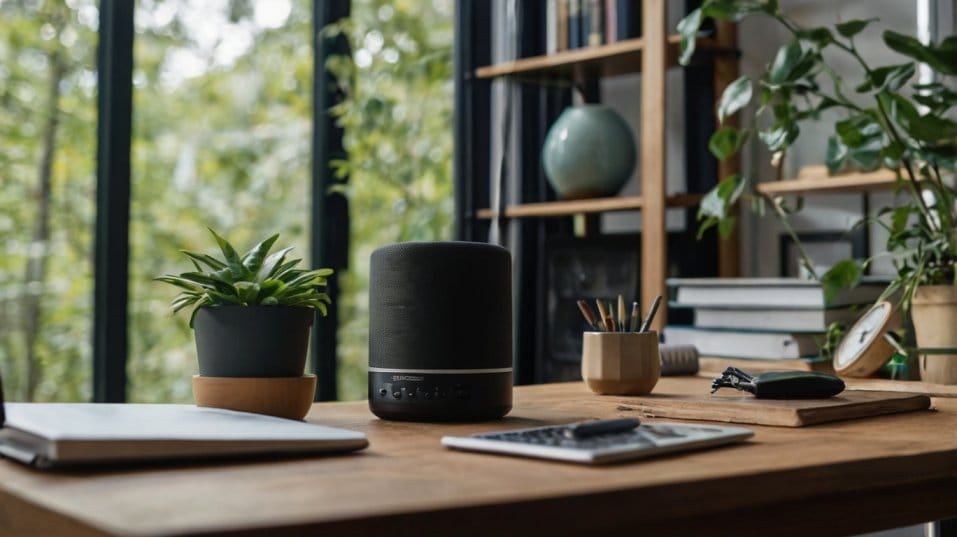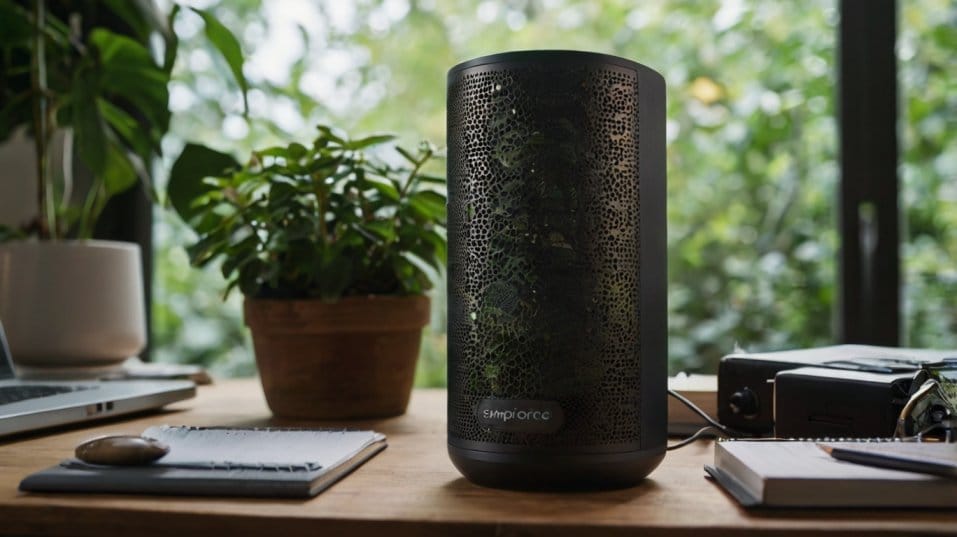How to Use Soundscapes for a More Mindful Office
Discover how mindful soundscapes improve workplace focus, reduce stress, and create a more harmonious office environment.

Have you ever left work feeling mentally drained without knowing why? The noise around you—conversations, ringing phones, and office buzz—could be the culprit.
Your brain constantly processes these sounds, whether you’re paying attention or not. Left unchecked, workplace noise fuels stress, disrupts focus, and saps energy.
But sound isn’t the enemy. With the right approach, it can enhance concentration, lower stress, and create a more mindful workspace. The key lies in using sound strategically instead of letting it control you.
The Hidden Cost of Workplace Noise
Most professionals accept office noise as an unavoidable part of the job. But what if the very sounds you tune out are quietly chipping away at your productivity and well-being?
Noise doesn’t just create momentary distractions—it has lasting effects on mental and physical health.
Distraction, Fatigue, and Stress
Loud environments fracture attention, making deep work nearly impossible. Research shows that persistent background noise reduces problem-solving abilities, memory retention, and creativity.
Open offices, notorious for constant interruptions, can leave employees exhausted before noon. Even low-level ambient noise can trigger stress responses, disrupting workflow and increasing irritability.

How Sound Impacts Performance
A chaotic soundscape does more than irritate—it actively impairs cognitive function. The brain must work harder to filter distractions, leading to mental fatigue.
Over time, this depletes energy, weakens decision-making, and slows productivity. On the flip side, a well-designed auditory environment can do the opposite: boost focus, enhance mood, and promote sustained engagement.
The Science Behind Sound and Productivity
Studies show that excessive noise exposure increases stress hormone levels, which can lead to long-term health effects such as hypertension, anxiety, and sleep disturbances.
Conversely, environments with controlled soundscapes have been linked to improved cognitive function, better problem-solving abilities, and higher levels of job satisfaction.
The type, volume, and frequency of sound all play a role in shaping how employees interact with their work environment.
Crafting a Mindful Soundscape
Not all noise is harmful. The right sounds can counteract workplace stress, boost focus, and create an environment that supports productivity.
By intentionally shaping your office’s auditory landscape, you can transform sound from a distraction into a tool for mindfulness.
Use Nature Sounds to Lower Stress
The human brain responds positively to natural soundscapes. Ocean waves, rustling leaves, and birdsong have been shown to reduce cortisol, enhance cognitive function, and restore mental clarity.
Offices can integrate nature sounds through dedicated audio systems, sound machines, or personalized apps that allow employees to choose their preferred ambient background.
Leverage White Noise to Mask Distractions
White noise (a steady, unstructured sound) helps neutralize interruptions. Open offices often suffer from unpredictable noise spikes—conversations, keyboards clicking, doors closing—that break concentration.
White or brown noise creates a consistent auditory backdrop, helping employees stay in the zone. Whether through office-wide systems, noise machines, or apps, providing steady background sound can dramatically improve focus.
Choose Music That Supports Productivity
Music affects mood and cognitive performance. The right playlist can keep employees engaged, while the wrong one can be distracting.
Instrumental music, lo-fi beats, or classical compositions provide a rhythm that supports workflow without pulling attention away.
To maximize effectiveness, office playlists should avoid lyrics and opt for steady tempos that sync with focus-driven tasks.
Types of Productivity-Boosting Music:
- Lo-fi beats: A steady rhythm with subtle melodies that enhance concentration.
- Classical compositions: Mozart, Bach, and Debussy have been linked to cognitive enhancement.
- Ambient electronic music: Soft, undistracting, and effective for maintaining focus.
- Jazz and soft instrumentals: A relaxing alternative for creative problem-solving.
Create Quiet Zones for Deep Work
Not everyone thrives in an environment filled with background noise. Dedicated quiet spaces give employees a retreat for intense focus, meditation, or mindful breaks.
A well-designed quiet zone includes soft acoustics, comfortable seating, and a calming atmosphere free from digital distractions.
Elements of an Effective Quiet Zone:
- Soundproofing materials: Reduce outside noise and echoes.
- Soft lighting: Supports relaxation and reduces eye strain.
- Ergonomic seating: Encourages comfortable extended focus sessions.
- Minimal technology: Avoids unnecessary digital distractions.
Encourage Headphones for Personalized Soundscapes
Sound preferences are highly individual. While one person thrives on nature sounds, another might need binaural beats to concentrate.
Encouraging the use of noise-canceling headphones allows employees to tailor their auditory environment, reducing tension and increasing efficiency. Mindful listening options include:
- Binaural beats: Subtle soundwave therapy that enhances focus.
- Guided meditation audio: A simple way to integrate mindfulness into the workday.
- Ambient soundtracks: Background audio designed to maintain productivity.
Implement Office-Wide Acoustic Design Strategies
Beyond individual listening habits, companies can optimize office acoustics for a healthier sound environment.
Thoughtful design elements can minimize noise pollution and create an auditory setting that naturally supports focus.
Ways to Optimize Office Acoustics:
- Use sound-absorbing materials: Carpets, wall panels, and ceiling tiles reduce sound reflections.
- Strategic desk placement: Minimizing noise exposure by positioning workstations away from high-traffic areas.
- Adjustable sound systems: Allow employees to customize background sound levels based on team needs.
- Acoustic dividers and partitions: Reduce cross-talk and create designated quiet zones.
Final Thoughts
The sounds that fill your office shape the way people think, feel, and perform. A haphazard auditory environment creates stress and distraction, but a thoughtfully curated soundscape enhances focus, reduces anxiety, and fosters mindfulness.
Start small: introduce nature sounds, experiment with white noise, or allow employees to personalize their own audio experiences. Consider broader office acoustics to improve overall sound design.
A mindful sound environment isn’t just a productivity hack—it’s a step toward a healthier, more engaged workplace.




